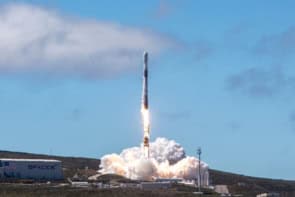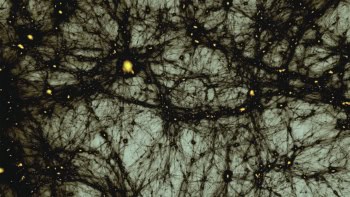Astronomers believe that the Moon was formed when a Mars-sized body smashed into the Earth, ejecting matter into orbit and lengthening our day to its present value of 24 hours. Until recently, however, estimates of much of the Moon is “impactor material” that came from this impactor object, as opposed to the Earth, have varied wildly - from 1 to 90%. Now, by comparing the compositions of lunar and terrestrial rock samples, astronomers in Germany have calculated that no more than two-thirds of the Moon is impactor material. Moreover, they estimate that the Moon must be at least 4.5 billion years old (C Münker et al 2003 Science 301 84).
Carsten Münker and co-workers at the University of Münster compared the ratios of niobium (Nb) to tantalum (Ta) in samples of rock from the Moon, Earth, Mars and meteorites. The team found a Nb/Ta ratio of 17 for the Moon, compared with 14 on Earth. The ratio in the other samples was almost 20, which should be consistent for bodies throughout the solar system – including the object that collided with the Earth.
According to the researchers, this variation suggests that the impact that formed the Moon took place during the formation of the Earth’s rocky mantle and iron core – a process that geologists believe was aided by the impact. Under high pressures, niobium becomes ‘siderophile’ or iron-loving, so much of the terrestrial niobium would have become incorporated into the Earth’s core when it formed, leaving a niobium-poor mantle.
If the giant impact occurred while the core and mantle were forming, the Earth would have contributed little niobium to the Moon. But Münker and colleagues calculated that the lunar Nb/Ta ratio would be boosted to the observed level if up to 65% of the Moon consisted of impactor material.
This theory also leads Münker’s team to believe that the Moon must be at least 4.5 billion years old, since radioisotope dating shows that the Earth’s core and mantle were fully formed by that time.



